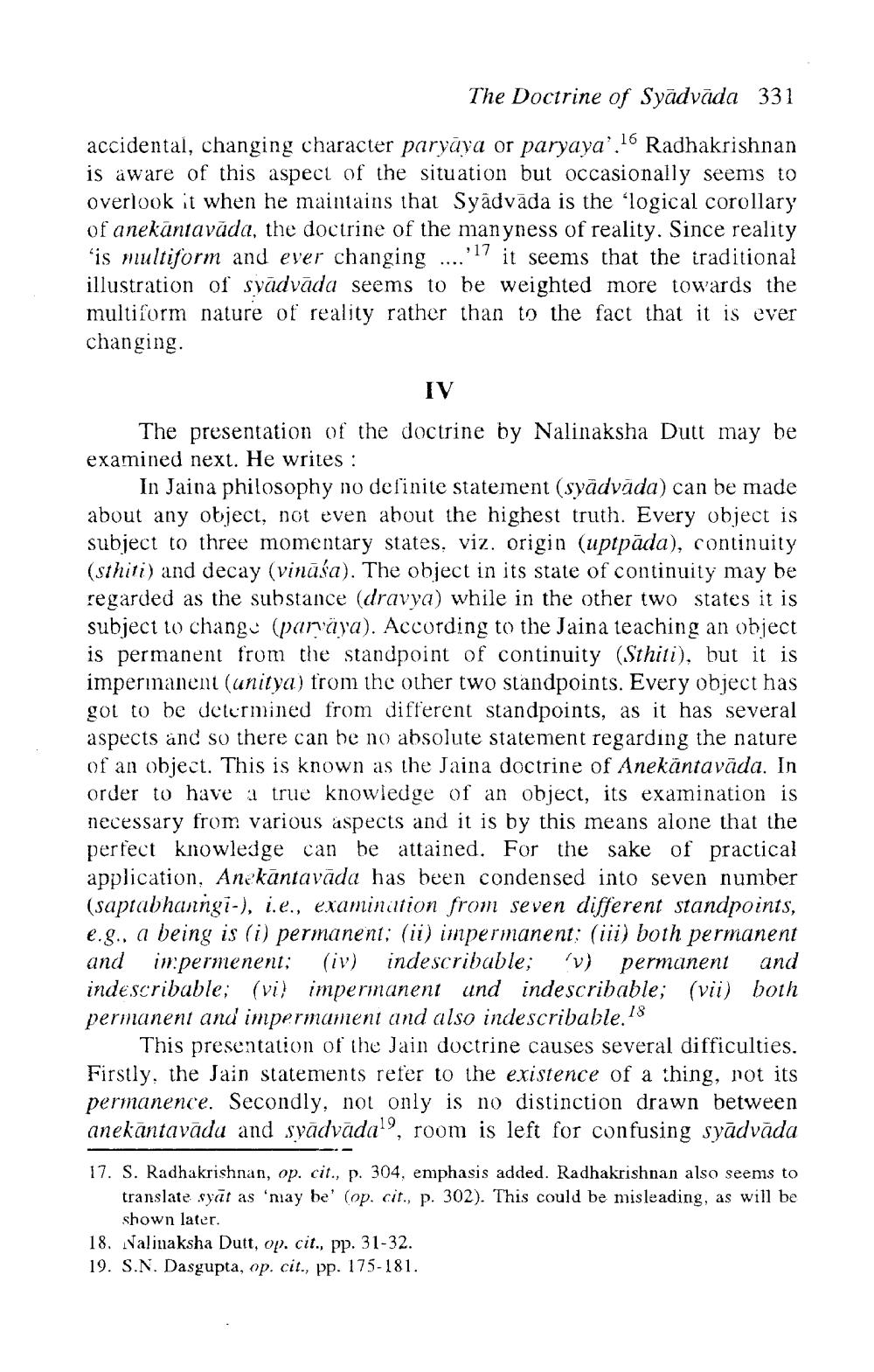________________
The Doctrine of Syadváda 331
accidental, changing character paryāya or paryaya’.16 Radhakrishnan is aware of this aspect of the situation but occasionally seems to overlook it when he maintains that Syâdvāda is the 'logical corollary of anekantavāda, the doctrine of the manyness of reality. Since reality ‘is multiform and ever changing ....!!! it seems that the traditional illustration of svadvāda seems to be weighted more towards the multiform nature of reality rather than to the fact that it is ever changing
IV
The presentation of the doctrine by Nalinaksha Dutt may be examined next. He writes:
In Jaina philosophy no definite statement (syädváda) can be made about any object, not even about the highest truth. Every object is subject to three momentary states. viz. origin (uptpāda), continuity (sthiti) and decay (vināśa). The object in its state of continuity may be regarded as the substance (dravya) while in the other two states it is subject to changu (parvaya). According to the Jaina teaching an object is permanent from the standpoint of continuity (Sthiti), but it is imperimanent (unitya) from the other two standpoints. Every object has got to be determined from different standpoints, as it has several aspects and so there can be no absolute statement regarding the nature of an object. This is known as the Jaina doctrine of Anekantavāda. In order to have a true knowledge of an object, its examination is necessary from various aspects and it is by this means alone that the perfect knowledge can be attained. For the sake of practical application, Anekantavāda has been condensed into seven number (saptabhaningi-), i.e., examinition from seven different standpoints, 8.g., a being is (i) permanent; (ii) impermanent; (ii) both permanent and impermenent; (iv) indescribable; (v) permanent and indescribable; (vi) impermanent und indescribable; (vii) both permanent and impermament and also indescribable. 18
This presentation of the Jain doctrine causes several difficulties. Firstly, the Jain statements refer to the existence of a thing, not its permanence. Secondly, not only is no distinction drawn between anekantavada and syadvada", room is left for confusing syādvāda
17. S. Radhakrishnan, op. cit., p. 304, emphasis added. Radhakrishnan also seems to
translate syāt as 'niay be' (op. cit., p. 302). This could be misleading, as will be
shown later. 18. Nalinaksha Dutt, op. cit., pp. 31-32. 19. S.N. Dasgupta, op. cit., pp. 175-181.




